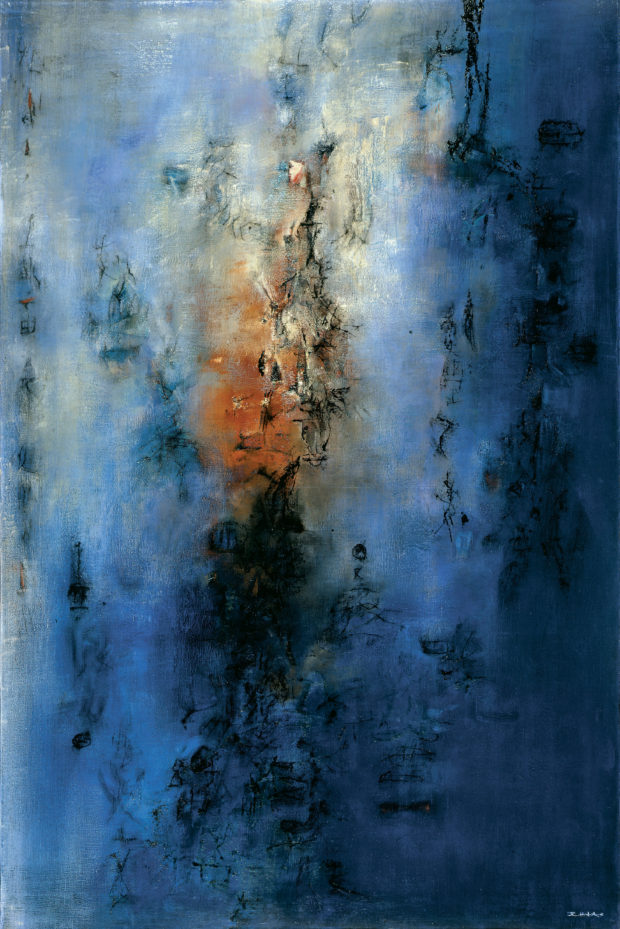
1955
Oil on canvas
76 3⁄4 × 51 1⁄8 in. (195 × 130 cm)
Private collection, Switzerland
©Zao Wou-Ki ProLitteris, Zurich. Photography by Dennis Bouchard
At the entrance of the exhibition floats Zao Wou-ki’s painting Hommage à Chu Yun—05.05.55 (1955), a large canvas cloaked in fluid patches of startlingly limpid aquamarine, rust, and warm cream. The abstract work appears to conceal something underwater. Perhaps it is the ancient Chinese poet of the title, who, after being exiled, drowned himself in the Miluo River. The concentration of reddish color in the center hints at an object, yet the iridescent ripples make it difficult to identify.
No Limits: Zao Wou-ki, currently on view at the Asia Society Museum, is the artist’s first-ever retrospective in the U.S. Zao (1921-2013) is perhaps best known as the Chinese painter who moved to Paris after World War II, where he worked alongside the French Informel painters, while also maintaining a dialogue with the Abstract Expressionists in New York. Zao was not singular in his global career: many post-war painters enthusiastically communicated with an international network of artists and traveled around the world. The exhibition curators Dr. Melissa Walt, Dr. Ankeney Weitz, and Michelle Yun characterize modern abstract painting as defined by this “dynamic cross-cultural circulation of ideas and images.”
Yet if we take this “global scope of modern abstraction” as the starting point of the exhibition, the repeated curatorial emphasis placed on Zao’s artistic fusion of Chinese and Western influences seems too reductive an analysis. The show presents the artist’s oeuvre chronologically, indicating an intensifying progression towards this multicultural ideal. This particular narrative, however, makes it challenging to appreciate Zao’s earlier works on their own terms, as they can be perceived merely as stepping-stones towards his final large canvases, such as 22.11.2002-10.12.2003 (2002-2003). While visually attractive, the chronological curation positions these hazy abstracted mountainscapes and harbor scenes as the East-West culmination of Zao’s oeuvre, embodying both the atmospheric Chinese landscape and more Western abstract painting styles.
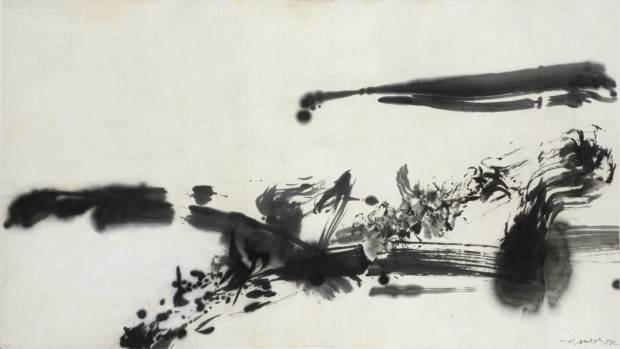
1972
India ink on paper
26 3⁄16 × 47 1⁄16 in. (66.5 × 119.5 cm)
Private collection, Switzerland
©Zao Wou-Ki ProLitteris, Zurich. Photography by Antoine Mercier
Another point of concern is the heavy emphasis on Zao’s late-career forays into Chinese ink painting, several examples of which are on view in the exhibition in marked contrast to his colorful oils. Though the swelling ink blots, dots, and slashes in works such as Sans titre (Untitled) (2007) reveal his understanding of ink’s properties, they do not have the enthralling animation present in many of Zao’s earlier, creeping black lines. The exhibition draws much attention to these late ink paintings, perhaps due to their obvious Chinese influence, but ultimately to the disservice of his mid-career works.
The journey towards those powerful works of 1950s and 1960s does follow a more traceable progression. Zao grew up practicing calligraphy and ink painting in a well-to-do household in Nantung, near Shanghai. He eventually trained in oil painting at the Hangzhou School of Fine Arts, around which time he began saving postcards and magazine pages featuring works by Cézanne, Matisse, and Picasso. In 1950, at the age of 29, he discovered the fanciful world of Paul Klee.
![Sans titre (Joueurs de tennis) (Untitled [Tennis players]) 1945 Oil on muslin 10 5/8 × 13 3/4 in. (27 × 35 cm) Private Collection, Switzerland ©Photography by Dennis Bouchard](http://ifacontemporary.org/wp-content/uploads/2016/10/Image-3-620x478.jpg)
1945
Oil on muslin
10 5/8 × 13 3/4 in. (27 × 35 cm)
Private Collection, Switzerland
©Photography by Dennis Bouchard
A small side gallery presents Zao’s earliest works from 1942-1953 – there, the homage paid to pre-war modern European artists is clear. Paysage (Landscape) (1951) immediately recalls the magical colors and whimsical lines of Klee, and perhaps the intricate sketches of imagined cityscapes by the French artist Wols. Take a step back, however, and an overarching development across this first decade is Zao’s growing mastery over color. Under his initial motifs of stick figures, trees, animals, teapots, and other representational elements, you can make out the foundations for his later abstract swaths, washes, and dollops of oil paint.
In the first of the main galleries of the exhibition, spanning 1953 to the 1960s, we see Zao’s colors free from figurative elements, but occasionally interwoven with spindly black lines and symbols. Much of the wall text addresses these lines, linking them to calligraphy, and especially to ancient Chinese symbols carved in rock and bronze. While they may visually evoke these ideas, they also can be seen as a continued dialogue with Klee’s lines. Zao’s black lines from this period ultimately do not function as a written language like calligraphy, but rather, as a means to structure the composition of his canvases.

1957
Oil on canvas
20 × 28 in. (50.8 × 71.1 cm)
Chao 2000 Trust
Photography by Michelle Geoga, 2012
The novelty of these “Chinese” lines in a Western oil painting, however, is likely what sparked Zao’s initial popularity. He was awarded his first exhibition at Galerie Creuze in Paris in 1949, and the New York gallerist Samuel Kootz (who was also the dealer of prominent artists such as Robert Motherwell and Willem de Kooning) began representing Zao in 1957. The Asia Society exhibition follows that initial fascination to a certain extent, with a focus on the cross-cultural elements in the oeuvre of a Chinese artist working in the West. While this hybridity is essential to understanding Zao’s formative years and an important premise of the retrospective, the contemporary viewer should be wary of using this cross-cultural dynamic to both launch and conclude interpretations of his paintings.
To extract oneself from this bind, detailed visual analyses of Zao’s works can prove illuminating. Several formal characteristics suggest less linear, but more interesting, threads that run through Zao’s career. Beginning with the aforementioned Hommage à Chu Yun, an overall sense of something – nature, landscape, reflection, movement – remains present in his work. His earlier paintings from the 1950s and 1960s utilize those spindly black lines to hint at the mass of an object.
In Mistral (1957), a somber painting punctuated with a spark of vivid orange, Zao’s overlay of crackly black patches and veiny webs of black lines emerge from within textured washes of black and muted brown. The organic spread of lines suggests a creeping movement or creature more than a gust of Mediterranean wind referenced by the title. Zao’s technical craft warrants much further attention, and carefully observing his use of material is a formal key to appreciating his subtle contributions to post-war oil painting. Stand closer to any canvas, and the range he achieved with his materials is striking: he seamlessly incorporated multiple pale washes of color with slabs of opaque – occasionally shiny – pigment. The thick patches in Mistral sparkle as their crevices catch the light.
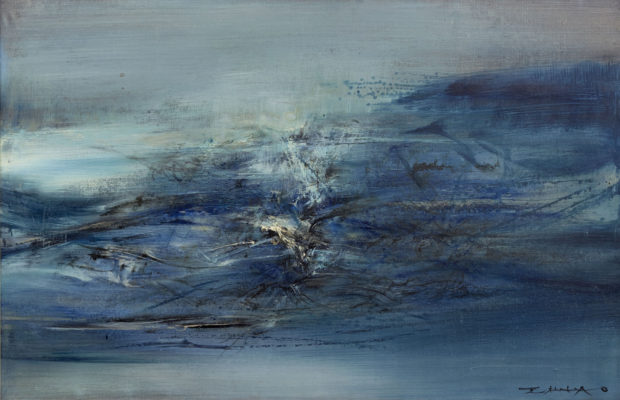
1965
Oil on canvas
26 × 39 in. (66 × 99.1 cm)
Chao 2000 Trust
Photography by Michelle Geoga, 2012
In other works, such as Traces dans la ville (1954), Zao physically gouged lines into the painted surface. Other times, it appears he held a waterlogged brush over the canvas, letting the droplets dilute perfect circles into the paint. Often, the interplay of light and dark colors resembles the finish of ceramics or the swirls of marble. Later on, his black lines become brushier, as if windswept, and eventually fade away entirely. The colors in 05.03.65—Pour mon frère Wu-Wai (1965) seem to splash or blow around the picture space without a distinct black skeleton, affecting the viewer instead with a mesmerizing whirlwind of movement.
In his late-career paintings, however, this movement of color and careful manipulation of paint fade. These works return to more plainly representational landscapes, and directly draw in Eastern elements. His final years clearly centered more on carefree experimentation in different media, imagery, and cultural references – not on the meticulous craft and cohesive composition visible at the creative climax of his career. Zao painted Décembre 89-Février 90-Quadriptyque (December 89-February 90-Quadriptych) (1989-90) in massive abstract strokes on four gold canvases joined to resemble a Japanese screen; 27.02.98 (1998) recalls a pit of smoldering embers and, if you look closely, some of the black lines here take the shape of “火,” the Chinese character for fire. While these works remain balanced, they lack the whirlwind dynamism of works like Hommage à Chu Yun or Mistral. By escalating towards these later works, the curatorial narrative of the exhibition feels out of sync with the true arc of the artist’s oeuvre – the visitor thus concludes the show a little confused and underwhelmed.
The exhibition does too much to highlight the progress towards this final “fusion” in Zao’s oeuvre. In 1988, Zao admitted to “the ever-present fear of repeating myself. I paint my own life but I also try to paint an invisible place, that of dreams, somewhere where one feels in perfect harmony, even in the midst of agitated shapes or opposing forces.” One can argue that invisible places and places of dreams cannot be anchored geographically; they are neither influenced nor impacted by a fusion of East and West. Perhaps the show could have proposed that Zao’s artistic legacy is most alive in works from the 1950s-60s, where to avoid repeating his artistic idols and to escape culturally pigeonholing his creations, he uprooted his practice from both Chinese and Western identities by composing those harmonious – yet still agitated – dream worlds.
No Limits: Zao Wou-Ki runs until January 8, 2017 at the Asia Society Museum, 725 Park Ave, New York.

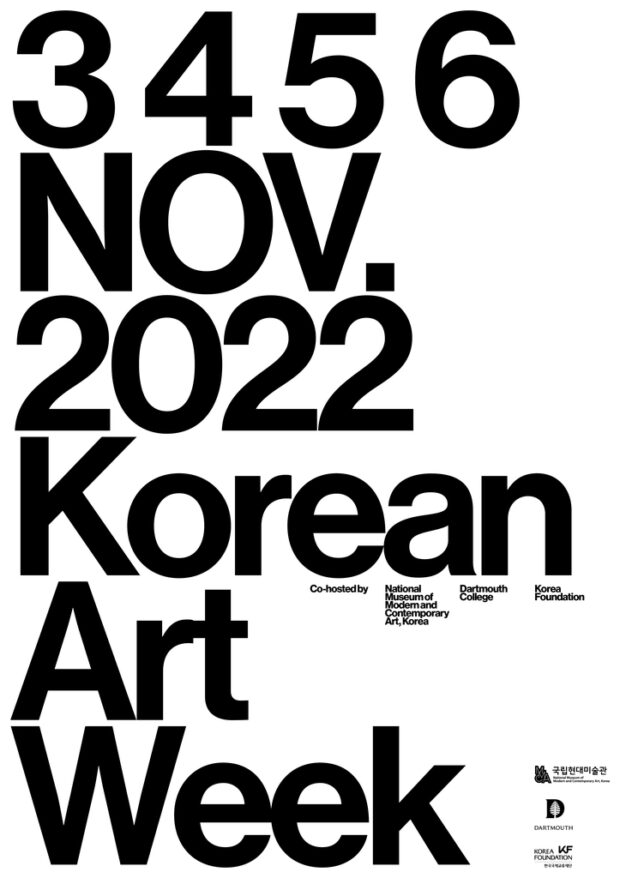


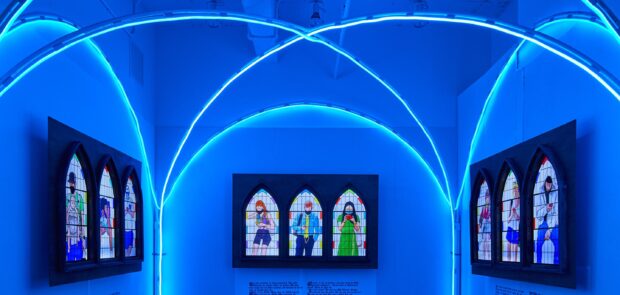

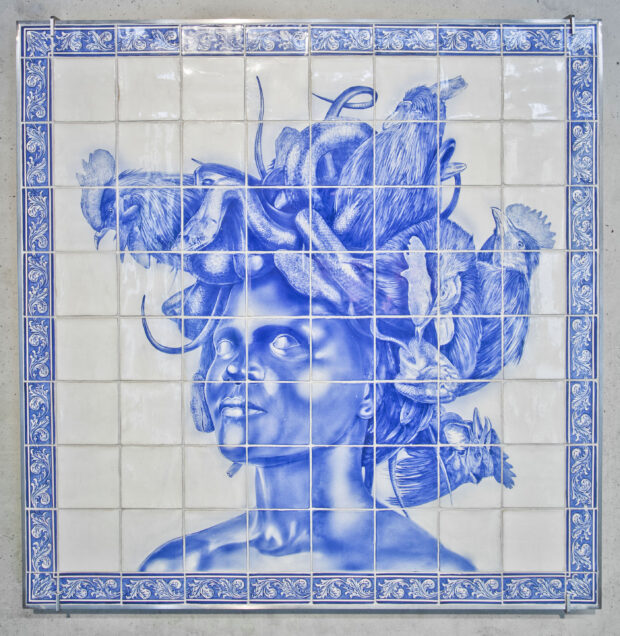


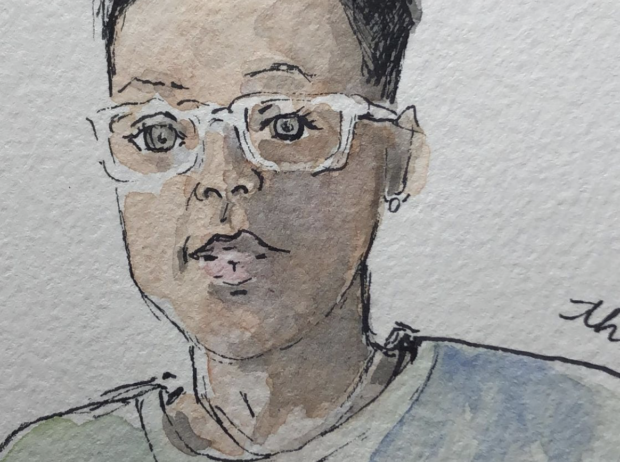
You should see the installation of the exhibition at the Colby College Museum of Art, where the original curatorial vision is preserved. Asia Society reformatted the show, so that to the intent (as set out by Walt and Weitz in the catalogue ) was not clear. The show is on view in Waterville, ME until Jume 4, 2017. Please contact us if you would like a private tour.